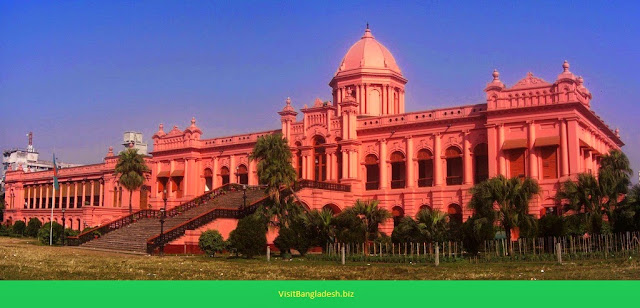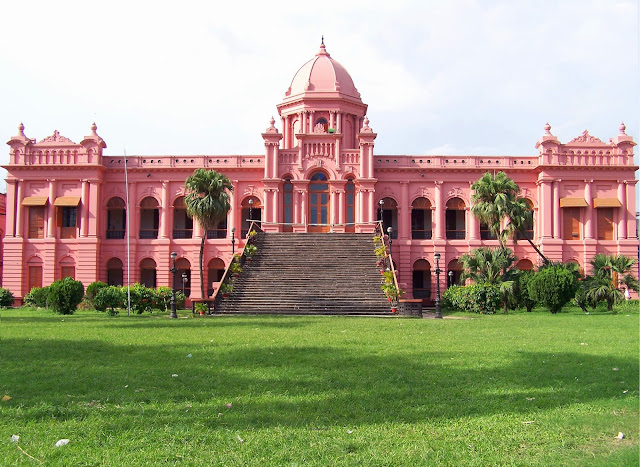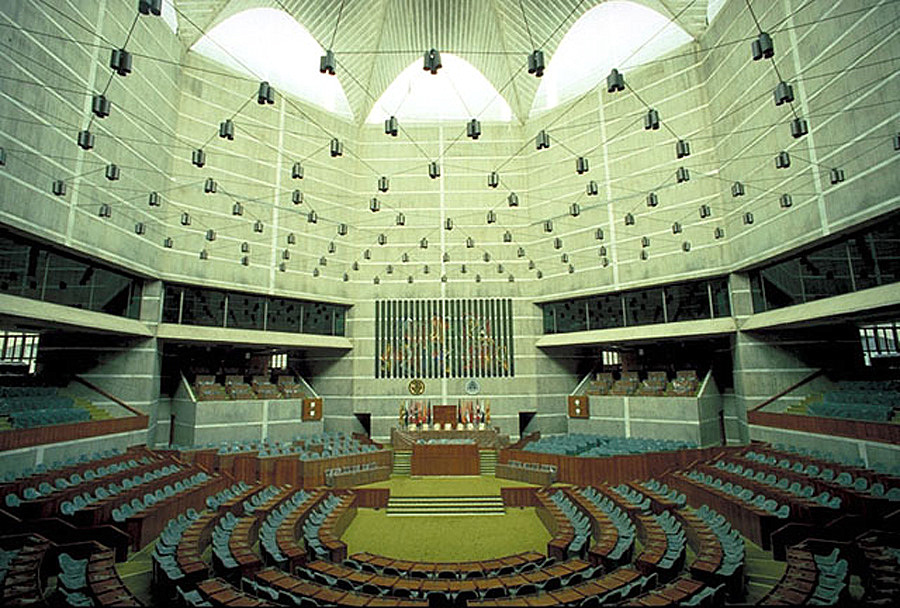Dhanmondi L@k
It is said
that Dhanmondi lake was a abandoned canal of a river named Caravan in
Karwanbazar once upon a time. Time passed and so much water flown through many
rivers, but there is no trace of the river Caravan now. Hence, the abandoned
canal still exists and at last Dhanmondi lake is a wonderful piece of
green with eye-catching scenic beauty and full of lives.
It is only
three kilometers long. The lake is surrounded by green. Various kinds of
flowers are blown here and there by the side of the lake. Especially in rainy
season, the lake teems with water. There are nicely planned walkways at the
banks and bridges over the water. Thousands of nature loving people come here
everyday to take a breath of life in nature and to get rid of the tire of metropolitan
life.

Ahsan M@nzil
Ahsan Manzil is one
of the most attractive historical sign in Dhaka, the capital of Bangladesh. It
is a wonderful tourist spot of Bangladesh in the capital city. Ahsan Manzil is
situated on the bank of the river Buriganga at Islampur Kumartuli in old Dhaka.
It was the official residential palace and the collectorate of the Nawab Family
of Dhaka. This well planned and well decorated magnificent building was
constructed in the Indo-Saracenic Revival architecture from 1859-1869 A.D. and
it is one of the top most significant architectural sign of Dhaka. To conserve
the history and culture of this locality, the government of Bangladesh is
preserving this palace as ‘Ahsan Manzil Museum since September 20, 1992 and
made it open for all.

The palace Ahsan Manzil is a two
storied building. It is divided into two parts - 1.Rangmahal, the eastern
building with the dome and 2.Andarmahal, the western side with the living
rooms. The high octagonal dome is on the central round room. There are large
drawing room, library, card room, state room and two other guest rooms in the
eastern portion of the palace. There is ballroom, the Hindustani room and some
residential rooms in the western portion. The drawing room and the Jalsaghar are
decorated with a beautiful artificial ceiling made of wood. A grand dining hall
and some smaller rooms are in the west part. Nice white, green and yellow
colored ceramic tiles decorate the floors of the dining and Darbar Halls. The
famous store-room, where Nawabs used to store their valuables, was in the
middle of the five rooms located in the western half of the ground floor.

purchased
this khuthi (trading house) from the French in Khaja Alimullah, father of Nawab
Abdul Gani, 1830 and after some renovation work made it their resident. Later
Nawab Abdul Gani reconstructed the palace and named it as ‘Ahsan Manzil’ on his
beloved son Ahsan Ullah in 1869.
More
than 4000 signs are collected and being displayed in Ahsan manzil Museum. These
are being displayed in 23 rooms out of 31 in Rangmahal. Among those, 9 rooms
are arranged according to photos captured in 1904.
Sh@heed Minar

The Shaheed Minar (English: Martyr Monument) is a
national monument in Dhaka, Bangladesh, established to commemorate those killed
during the Bengali Language Movement demonstrations
of 1952. On 21 February 1952, dozens of students and political activists were
killed when the Pakistani police force opened fire on Bengali protesters who
were demanding equal status for their native tongue, Bengali. The massacre
occurred near Dhaka Medical College and Ramna Park
in Dhaka. A makeshift monument was erected on 23 February[15]
by students of University of Dhaka and other educational
institutions, but demolished on 26 February[16]
by the Pakistani police force. The Language Movement gained momentum, and after
a long struggle, Bengali was given equal status with Urdu. To commemorate
the dead, the Shaheed Minar was designed and built by Hamidur Rahman, a Bangladeshi sculptor. The
monument stood until the Bangladesh Liberation War in 1971, when
it was demolished completely during Operation Searchlight. After Bangladesh
gained independence, it was rebuilt. At present, all national, mourning,
cultural and other activities held each year, regarding 21 February, have been
centered around the Shaheed Minar.
Jatiyo
Sriti Shoudho (Bengali: জাতীয় স্মৃতি সৌধ Jatio Sriti Shoudho)
or National Martyrs' Memorial is the national monument of Bangladesh is the symbol
in the memory of the valour and the sacrifice of all those who gave their lives
in the Bangladesh Liberation War of 1971.
J@tiya Sangshad
Bangladesh
Parliament Assembly Hall
(National
Parliament – Bengali: জাতীয় সংসদ
ভবন): Jatiyo Sangsad Bhaban was created
by American architect Louis I. Kahn. Construction was started in 1961 and
completed on 28 January 1982 with the total cost was about 32 million dollars.
It is situated at Shre-e-Bangla Nagar in Dhaka. Jatiyo Sangsad Bhaban was used
for the first time on 15 February 1982 as the venue for the eighth (last)
session of the second parliament of Bangladesh. Since then, it has been used
for the Bangladesh National Assembly.
Top pl@ces to see
and things to do in Dhaka
- Lalbagh Fort
- Dhakeshwari Temple
- Baitul Mukarram
- Ahsan Manzil
- Jatiyo Smriti Shoudho
- Shaheed Minar
- Dhaka University
- Liberation War Museum
- Sadarghat & Boat-riding
- Rickshaw Art and rickshaw-riding
- Jatiyo Sangsad Bhavan
- Bashundhara City






